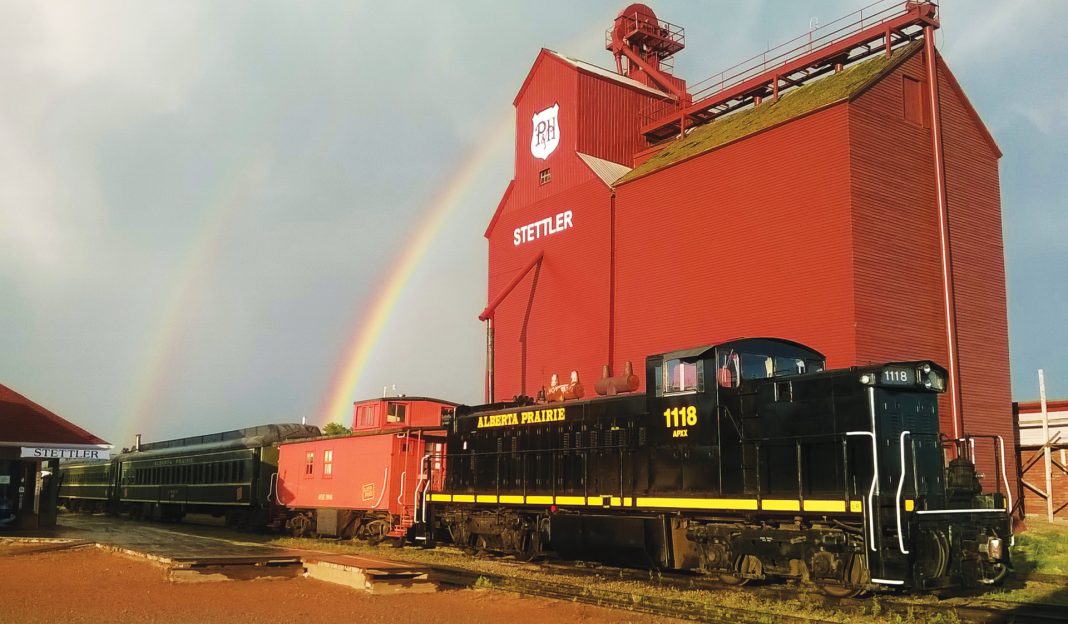By James Stoness
The story of the homesteading of the farming lands of the Canadian prairies is one of eagerness, hard work, sadness, and contentment. After the railway across Canada advertised cheap agricultural land, people from Northern Europe flocked to take advantage and to make new homes.
The pioneers plowed the land and established themselves on their allotment. As plots were surveyed, farmers came, spreading northward away from the railway tracks. The railway didn’t offer the land because they were kind. They wanted to make money on freighting machinery to the farmers, and carrying away grain, and cattle.
The soil was great for grain and the railway pushed sidetracks away from the mainline to reach these bountiful harvests. Grain elevators sprang up along the tracks and many little villages grew where there had been nothing but wide-open grassland.
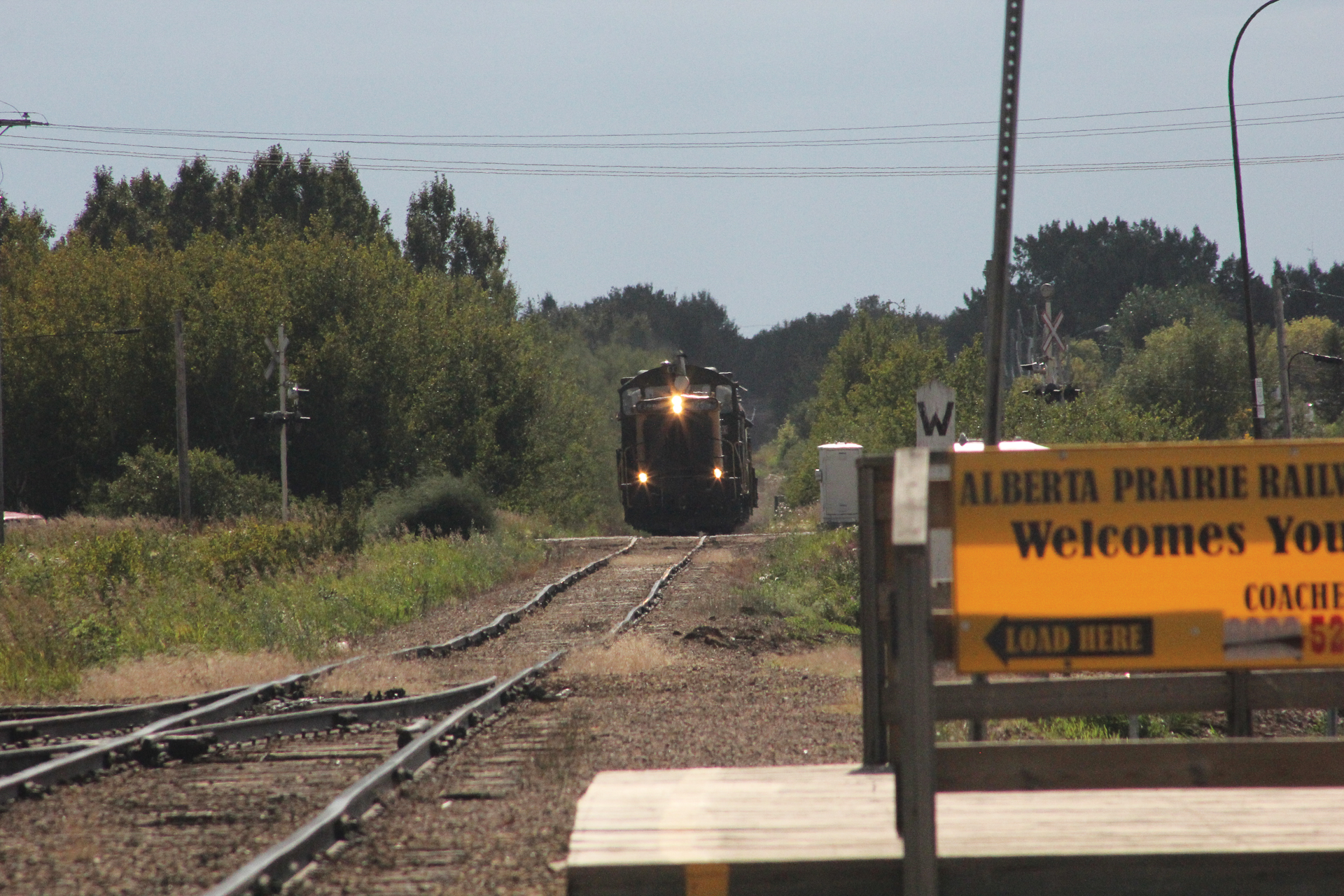
Those of us who drove the prairies years ago would marvel at these huge wooden structures which popped up on the horizon with constant regularity. The oldest elevator graced the back of the $1 bill and was burned by vandals.
As time passed, railways put their efforts into hauling a variety of freight across Canada and they started to think that it was a waste of money to keep maintaining tracks to elevators that only provided them with a few loads of grain. And to get that grain they had to go along and stop at a lot of small elevators and this was time-consuming and not profitable.
These elevators had become the focus of the community. The small towns thrived on the farmer who brought in the grain and spent money at their stores. New businesses opened, and people built homes. When elevators were closed, farmers had to truck grain to larger concrete elevators situated where the trains could get a big load at one stop. In many cases, the death of the elevator meant a slower death for some of the communities.
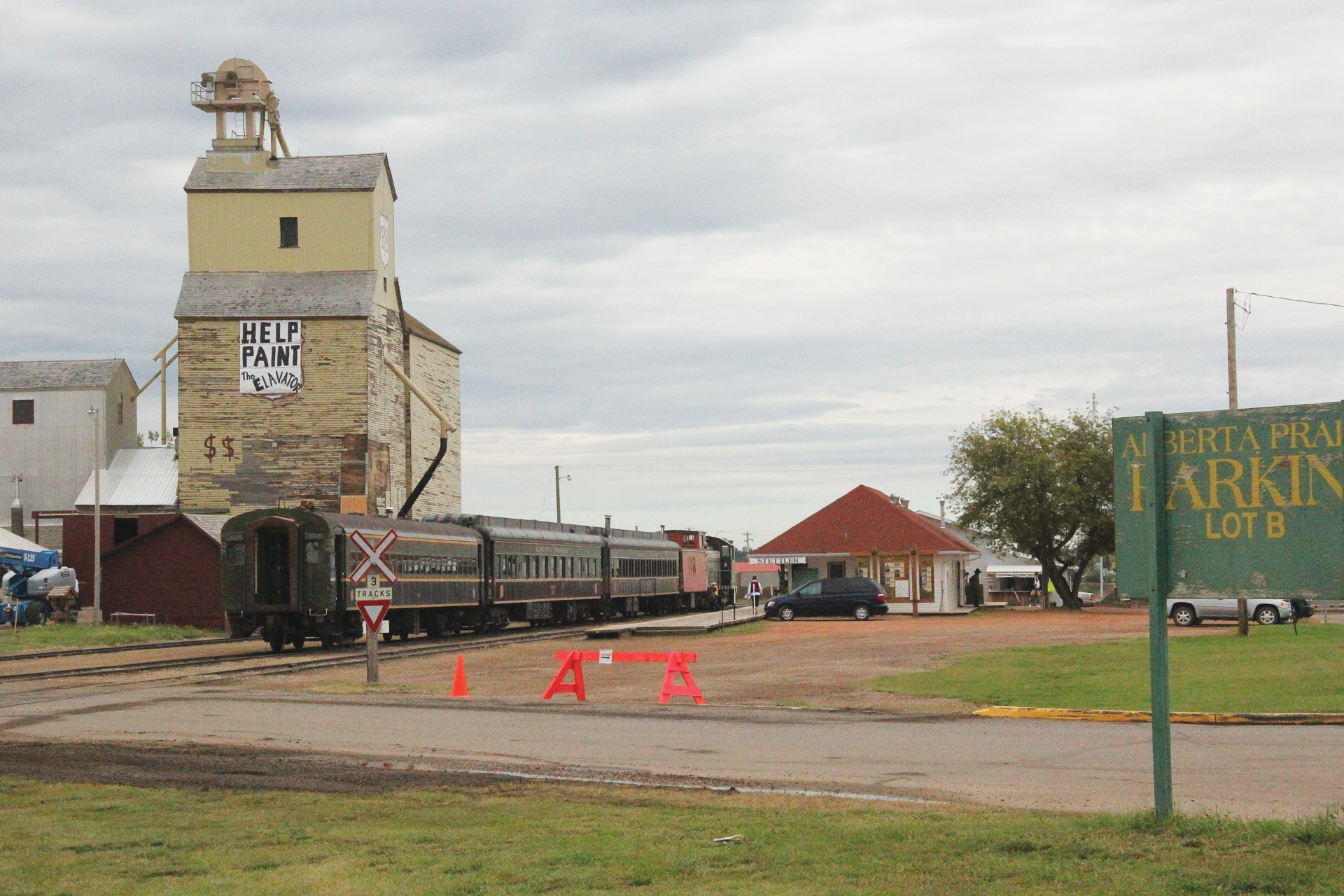 The Town of Stettler, Alberta, 63 miles east of Red Deer, could have followed the footsteps of similar towns but instead, its citizens have chosen to keep the town as a vibrant living community. The town is orienting itself to attract visitors. It doesn’t happen by itself. It needs a citizenry of forward-thinking people and people with ambition to make a plan and carry it through.
The Town of Stettler, Alberta, 63 miles east of Red Deer, could have followed the footsteps of similar towns but instead, its citizens have chosen to keep the town as a vibrant living community. The town is orienting itself to attract visitors. It doesn’t happen by itself. It needs a citizenry of forward-thinking people and people with ambition to make a plan and carry it through.
A group of dedicated citizens decided to ‘Save the Elevator.’ Another group has created a downtown Pioneer Park, The Town and Country Museum. All of this is backdropped by the big drawing card, the Alberta Prairie Railway, known to many of us as the Stettler Train.
If you are coming to town, just look for a tall, red-brown grain elevator. The train station is right across the tracks from it. The train may be drawn by a real live black smoke puffing steam engine or a plain vanilla diesel. If you are nostalgic, check out the schedule so you can get the steam engine. The trip starts at the station midst a milling crowd of those anxious to get aboard and usually accompanied by a lively group of children.
The six-hour trip makes use of the old track that passes by the old wooden elevator and heads southward to a place called Big Valley. All the trips have a delicious buffet meal which may be in a large tent in Big Valley, or in the community hall there.
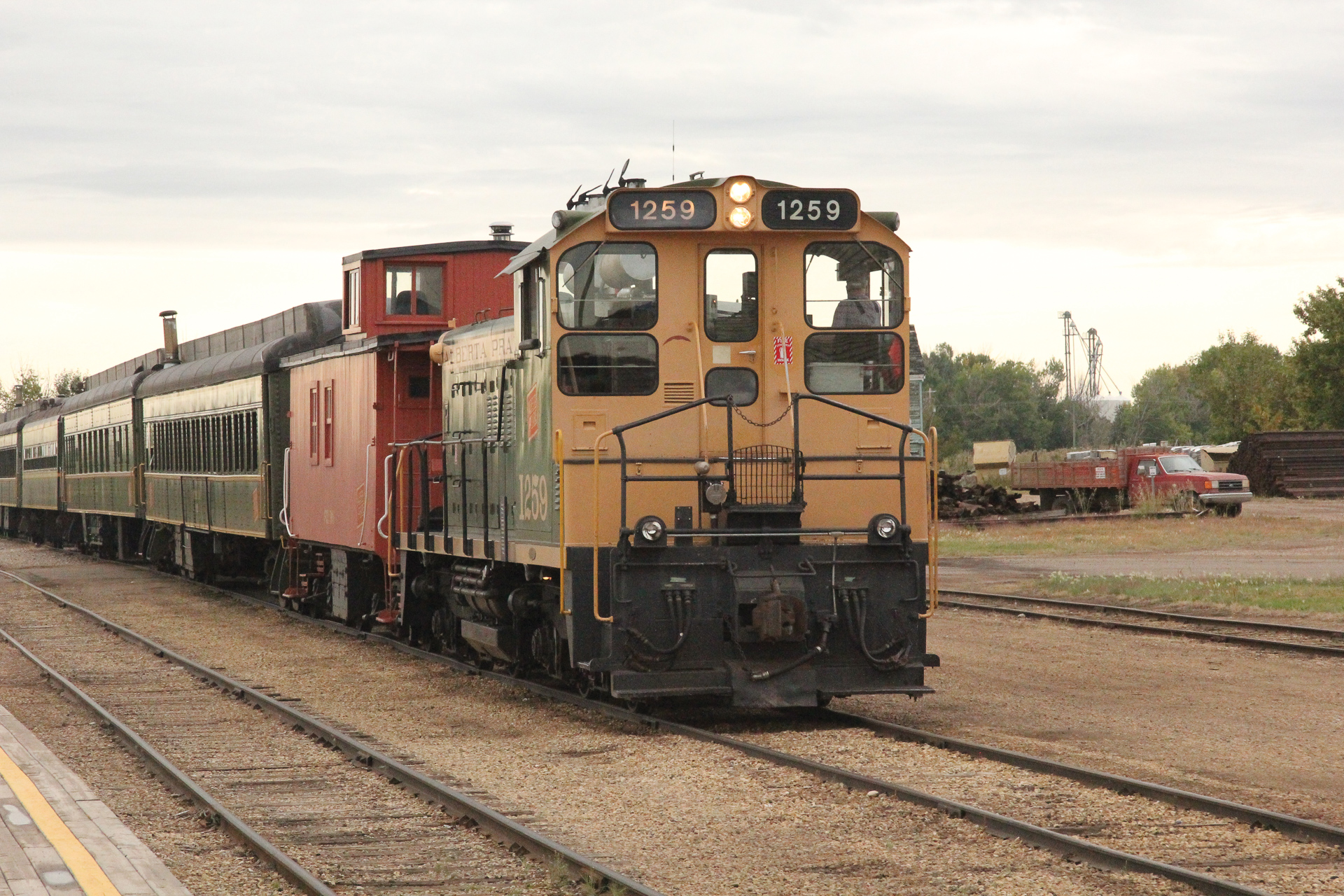
They offer a wide variety of excursions that include a simple country meal of roast Alberta beef, or a Rib BBQ, or a Newfoundland Excursion with steak and lobster. There is also an adult only for those who really like quiet and relaxation. Some excursions will present you with a murder mystery and you can participate in solving the puzzle of “Who Done It?” They suggest that this is not a good excursion for children. If you want to sit and savour the prairie air, slip over to the Open Air Coach. There is also an End of Season Excursion led by a steam engine, with an Alberta Beef meal, onboard entertainment and fireworks at the end of the trip.
It may not always be quiet and relaxed on some excursions because the train has occasionally been stopped by the Reynolds Raiders, notorious bandits of that part of the prairies. If they are caught the proceeds of the robbery are sent to charities.
There is also a ghost of the past, Gabriel Dumont, a Metis buffalo hunter, who patrols the platforms at each end of the trip and moves throughout the train to ‘protect’ the patrons. He has been known to shoot straight in some past hold-ups, so you can feel fairly safe. There may also be roving entertainers passing through the cars. As you ride over some of Alberta’s prime agricultural land you will frequently observe grazing deer or prowling coyotes.
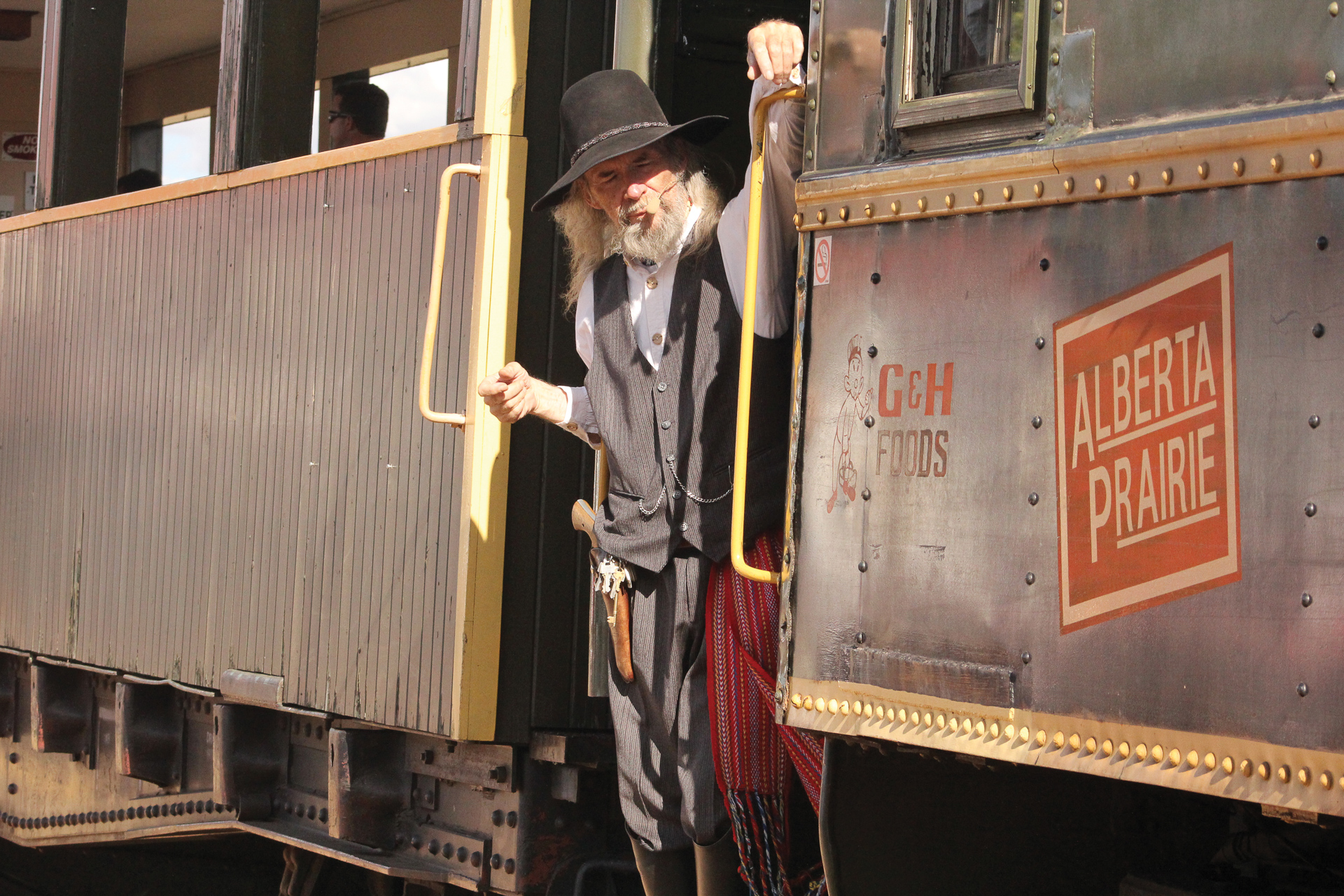
Upon your arrival at Big Valley you’ll be escorted off to the buffet and later there will be time to tour an old Canadian Northern Railway station, museum, and the railway roundhouse interpretive centre. Some will wish to visit the shops and stores of Big Valley.
The ninety foot grain elevator is almost 100 years old. The tall structure was showing its age and was letting water seep through the cladding. It wouldn’t be long before it disappeared, the result of another demolition job, or an arson attempt.
The volunteers “Save the Elevator” are the P&H Preservation Society, and they are really an ambitious group. At the beginning, they calculated they would need about $130,000 to put on new siding and repaint it. As well as that they needed to clean up the inside and refurbish the old machinery. They have organized well and at an August fundraiser they had threshing demos, rope making demos, flour making, wood saw demo, and entertainment topped off with a roast pork supper.
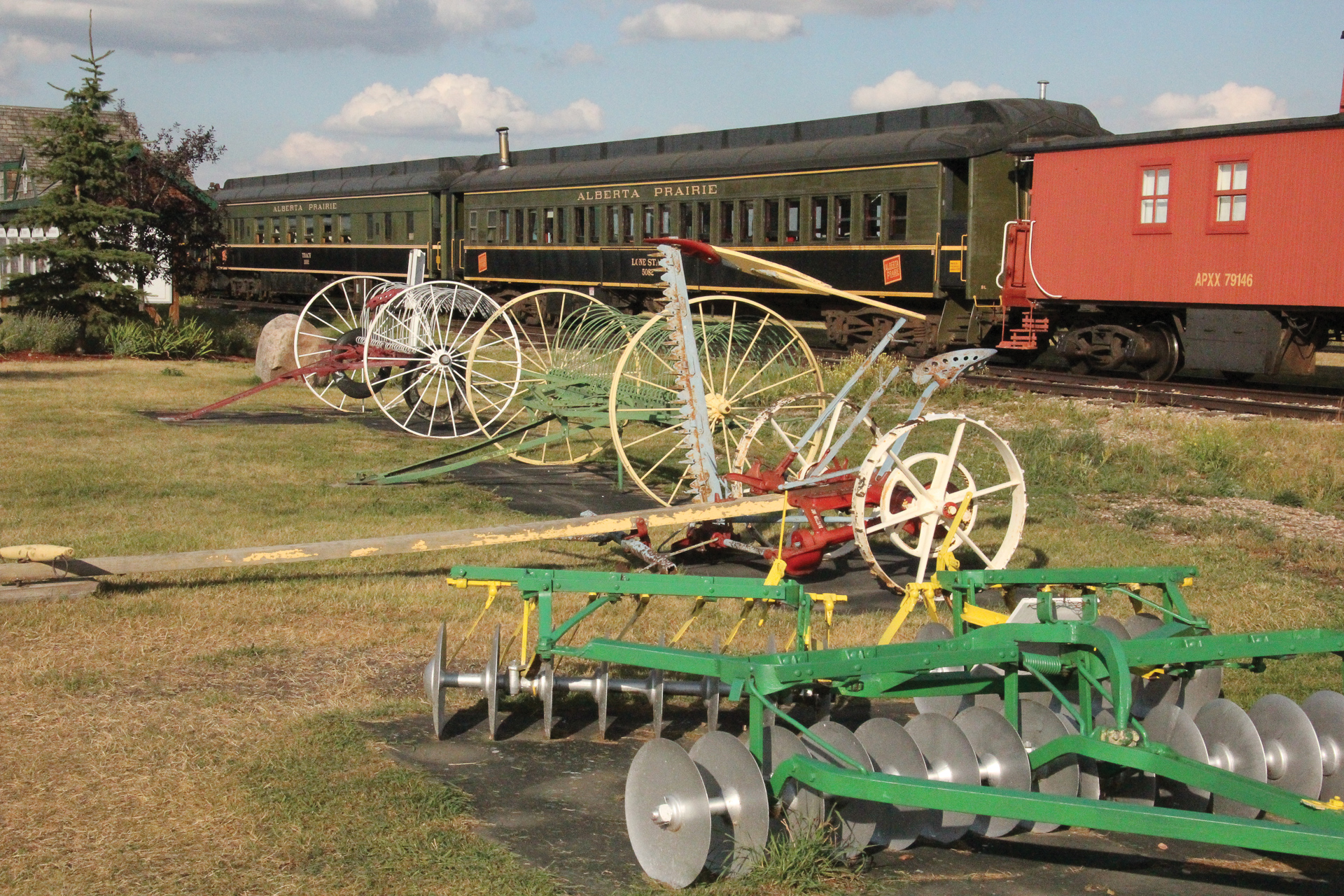
Parrish and Heimbecker (P&H) were unique being one of the few elevator companies that not only stored and shipped grain, they also incorporated a feed mill where farmers could bring their grain, or buy some from the elevator, and have it ground up for their animals.
When you enter the elevator you can see where they weighed the incoming grain, and moved it to storage bins with special elevators. They also weighed the grain leaving the elevator. It was a complex system. All the while they had to try and keep the dust cleaned up. Dust can explode and has been the cause of many elevator disasters.
The group has replaced the old feed shed where they would have kept grains for cattle, and other livestock, as well as salt and mineral. Now it is used as space for public meetings and get-togethers.
The location of the elevator next to the train station makes it a natural combination for tourists coming to see and ride the train. The elevator was probably the reason for the tracks and visitors can see how life was in the early days of Stettler.
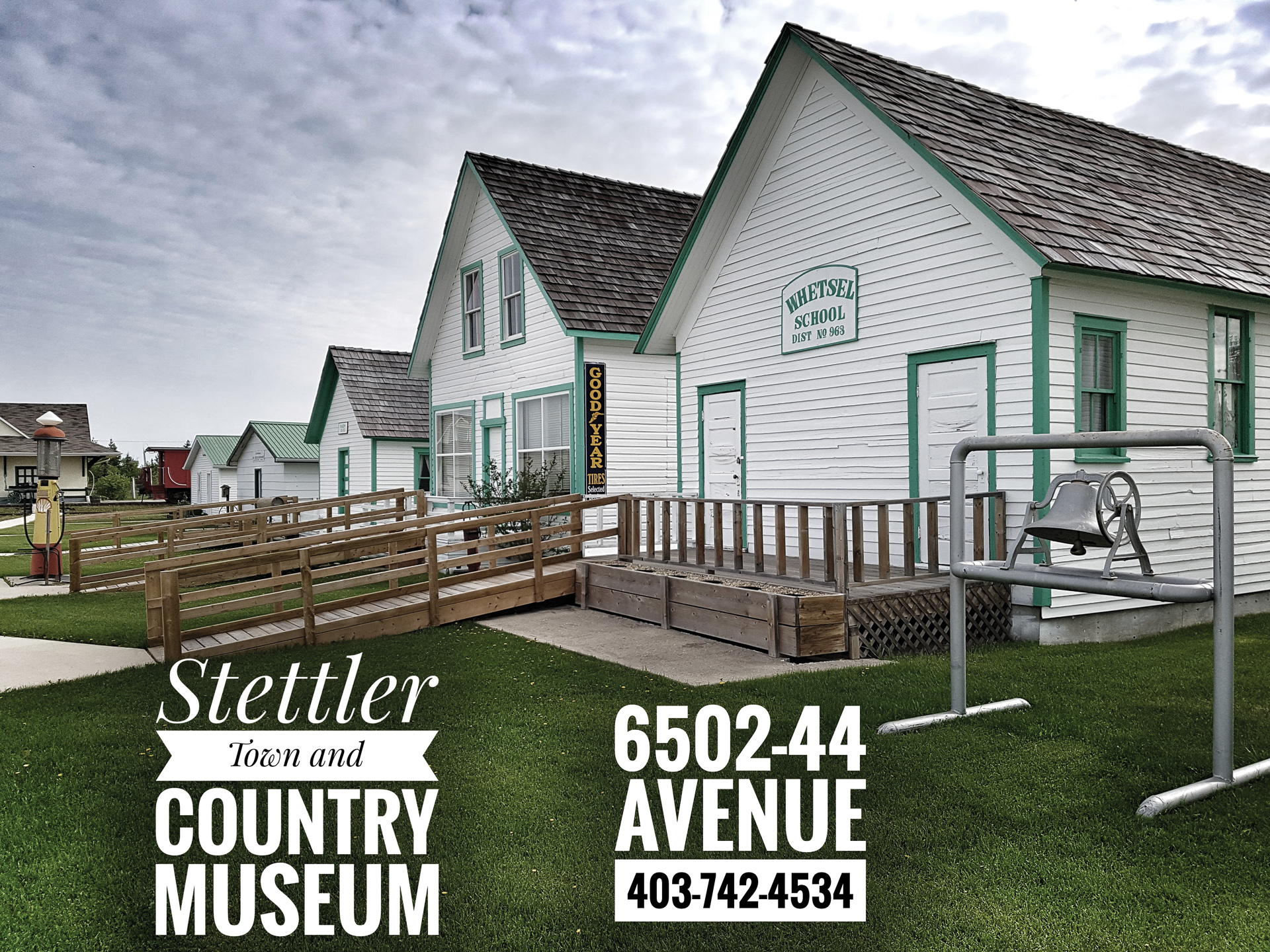
Another tourist attraction, providing a look into the past, is the Stettler Town and Country Museum. This is Alberta’s fifth largest Pioneer Village and is located in the southwest corner of town. It’s not just a stuffy building with pictures and stories. It has 26 buildings, many furnished as you would have found them if you had dropped in during their younger days. It’s an old prairie settlement surrounded by the present. It’s all there from the church, the courthouse, right down to the necessary gas pump.
While you are in the area you might want to head south on highway 56 to visit the Royal Tyrrell Museum with its huge collection of dinosaur fossils. In town, there is also a model of the huge Tyrannosaurus Rex. Along the valley, there are interesting outcrops of badlands with hoodoos and other fantastic figures as the result of erosion.
At Stettler, camping is handy at the Stettler Rotary CG, the Stettler Lions CG, or Prairie Junction RV Resort.
It is always nice to leave the fast four-lane traffic and browse through the quieter backcountry. A visit to Stettler takes you back to years that some of you may well remember, and exposes the younger ones to a chance to compare their lives now, to those years ago.
RV Lifestyle Magazine’s Travel Editor, James Stoness, is the author of ‘Touring North America’, a series of travel guides on CD and online to help you plan your trips across North America, as well as a series of novels. Visit his website to read his novels and travel guides – https://stonessrvtravel.com/



















